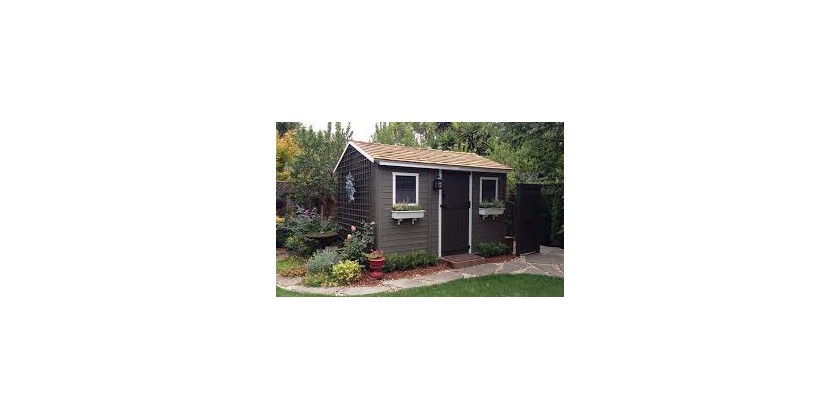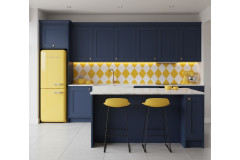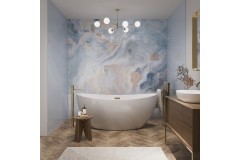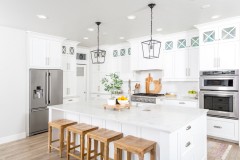
Adding a garden room is an enchanting way to enhance your garden, creating a sense of intimacy and adding an unexpected element to your outdoor space. These rooms are also ideal for separating plants that are too different in terms of their growing conditions or style to be grown next to one another. Growing them in separate spaces can eliminate any conflicts.
The Basic Concept Of Garden Rooms
A lot of people mistakenly believe that creating a garden room is as simple as adding some beautiful furniture and potted plants to their patio. While these enhancements can certainly make your patio more inviting, the finished space doesn't necessarily meet the definition of a garden room.
In order to be called a room, most spaces require walls. In the garden, that doesn't necessarily mean creating literal walls. It does, however, mean finding a way to separate the space, whether that is through the use of trees, shrubs, or hedges, or through the use of man-made structures like fences or screens.
The concept of garden rooms was popularized by the Sissinghurst garden according to Quick Garden. In this garden, a hedge was used to divide the space into formal rooms. In your own yard or garden, however, you can take a more casual approach. Rather than using a precisely trimmed hedge, you could design 'walls' out of lilac bushes, vines, or even tall grass. The primary goal is to find a way to separate your garden room from the rest of the outdoor space to create a sense of intimacy and surprise.
The Benefits Of Garden Rooms
From a design standpoint, adding a garden room to your outdoor space can make it feel bigger. If your yard is completely open, you can view the whole thing with a single glance, which can actually make it seem smaller. When there are interesting visual elements located throughout the space, however, your eye tends to wander around, focusing on the details and making the garden feel bigger.
Garden rooms are also an ideal setting for experimentation. Because the rooms are separated from the rest of your garden, you can use them to plant unique or unusual plants that aren't well suited to the rest of your landscape design. For instance, if you have a cottage garden, planting vibrant tropical plants right in the middle of it would disrupt the space. By placing those same plants in a garden room, however, you can still enjoy their beauty without disrupting the look and feel of your cottage garden.
Garden rooms can also function in different ways. For instance, you could create a garden room for dining, another for playing, and yet another for meditation. The concept is similar to how homes are divided into separate rooms. You can implement the same concept in your garden, creating unique spaces that each have their own personality and characteristics.
The First Steps In Creating A Garden Room
As you get started, you should sit down and think about exactly what purpose you want the garden room to serve. For instance, is it going to be a place where you grow exotic plants or a place for kids to play? When deciding where to put it, think about how foot traffic currently flows through your outdoor space. Although you don't want your garden room to block the primary entryway, you do want to put it in a place where people will naturally discover it as they walk through your yard.
Think about how the space will look as you approach it as well as the view that you will be able to see once you are inside. This will help you decide the best place for the walls so that you can maximize the view. Don't forget to think about how the walls will affect the amount of sunlight entering the space.
After you know what you are trying to accomplish and have determined where you are going to place the garden room, you can begin thinking about other details like the overall structure of the walls. Once you get the walls established, you can begin the most exciting part of the process, which is deciding what plants or furnishings to put in the space. Here are some factors that you may want to consider:
- Do you want the floor to be covered with stones, gravel, or pavers or would you prefer grass?
- Are you going to add water features, pergolas, or other structures to the space?
- Do you need to run electricity to the garden room for lights or other outdoor accessories?
Look for unique plants that provide a number of different sensory experiences. Not only should they be beautiful to look at but they should also be interesting to touch or smell. You may even want to think about adding edible plants to the space.
Ultimately, your goal should be to create a room where you want to spend time. A great example would be creating a garden room for dining. You could create a pass-through from your house into the garden room, decorating it with a table and other elements for entertaining. On the other end of the room, a second opening could allow guests to pass through into the rest of your garden.
Use your creativity and put your imagination to work. Chances are, you will be amazed by what you can accomplish.
Choosing The Right Location And Size
The way that you plan on using the room will play a key role in determining how large it should be and where it should be located. Keep in mind, your garden room doesn't have to be located close to your house. You can put it off in a corner of your garden where it is private and separated. Consider looking for an area that is frequently sunny. Just make sure that it is private enough to create a sense of intimacy.
Think About The Structure Of The Space
If you want to be able to use your garden room year-round, there are a number of options available. You can find prebuilt rooms that have everything that you need. If you just want to use the space during the summer, however, you can opt for a much simpler design. For instance, you could create a simple raised deck near a tree, filling it with beautiful furniture. If you want, you can even modernize the space by bringing in lighting, a patio heater, and a sound system so you can listen to soft music outdoors. Consider adding deck boxes or other types of storage so that you can tuck away soft items like pillows and blankets if it looks like it is going to rain.
Create A Cohesive Look
Ultimately, your outdoor room should not only work well with the rest of your garden but it should also work with your indoor space. Try using similar materials between all of these areas to create a sense of cohesion. For example, if you have a wooden fence, you could use a similar style of wood to create a backdrop for your garden room.
Bring In Decorative Accessories
When decorating inside your home, you may decide to go with simple patterns and neutral colors. Outside, however, you can take a lot more risks with design. For instance, bold patterns and bright colors look totally at home outdoors. Just make sure that the colors and patterns you choose work well with the overall atmosphere that you are trying to create. Bring in colorful cushions to create comfortable seating. Add a magical feel to the space with fairy lights or hanging lanterns. If the area has a hard floor, you can paint a rug-like pattern on it. Alternatively, you can also purchase a rug that is made specifically for use outdoors.
Tips For Making The Most Of The Space
If your garden room is on the smaller side, there are strategies that you can use to make it feel bigger. For instance, you could try hanging mirrors. Not only can they create the illusion of more space but they also can add more light by reflecting nearby candles or fairy lights after the sun goes down. Just avoid hanging them in areas where birds fly. If you have a sturdy wall located nearby, consider mounting a seat directly to the wall. You can even install lighting underneath the seat to create a unique look after dark. Potted plants and other natural elements can also help enhance your space.
Using Your Garden Room After Dark
Finding a way to heat your outdoor space can allow you to get a lot more use out of it. One option is to install an outdoor fireplace. While these fireplaces are attractive, they are somewhat bulky and difficult to install. A fire pit may be a more reasonable option, depending on your space. Consider opting for a relatively small fire pit so that you don't need to stock in a lot of wood. Another option is to look into gas heaters that are specifically designed for use outdoors. Keep in mind, however, that these heaters cost quite a bit to operate.












Leave a Reply Cancel Reply
All fields are required